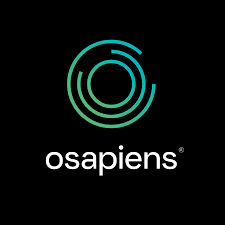Real-Time RegTech: Compliance Enters the Cloud Age in 2025

The financial world is becoming increasingly complex and interconnected. Traditional compliance regimes are marked by manual processes and periodic reporting. These regimes are proving outdated. Enter real-time, cloud-based RegTech: a fast-evolving space that is reshaping compliance with live data, automation, and smarter analytics. In 2025, as global transaction volumes surge and regulation tightens, this innovation is not optional, it is essential.
From Periodic to Continuous Monitoring
Historically, compliance relied on batch processing and scheduled KYC/AML reviews, monthly, quarterly, or annually. But with the proliferation of instant payments and digital assets, this delay creates vulnerabilities. Today’s cloud-based RegTech platforms ingest streaming data. They run real-time alerts on transactions, identities, and communications. These alerts operate via event-driven systems such as stream processing engines.
In 2025, regulatory technology trends show a clear shift toward continuous compliance monitoring. AI-powered models are achieving over 99% accuracy in classification tasks by processing large, real-time transaction streams. Real-time fraud and AML detection is becoming a standard expectation, not a niche capability.
Cloud as the Backbone
The scalability of cloud infrastructure is critical. Flexible, subscription-based services replace bulky, on-premise setups. Industry research highlights a dramatic increase in cloud RegTech adoption in 2025.
Projected global spend on RegTech solutions is expected to exceed $130 billion in 2025. The sector is experiencing over 30% annual growth, reflecting the increasing demand for scalable, real-time compliance capabilities. Such scale requires cloud platforms to provision capacity. They need to support cross-border access and handle rapid regulatory changes. Legacy systems struggle to offer these capabilities.
Cloud deployments also support secure architecture, data encryption, and compliance with jurisdiction-specific regulations. In addition, cloud-native compliance systems are increasingly adopting AI-driven anomaly detection to enhance real-time risk management.
Automation and Plug-and-Play APIs
Modern RegTech is modular by design. Platforms increasingly use plug-and-play APIs to connect to CRM systems, banking infrastructure, and third-party data sources. This enables centralized compliance workflows and real-time orchestration, such as automated KYC checks, identity verification, and transaction screening.
This high level of automation is driving major efficiency gains. Industry data shows reductions of 50% or more in onboarding times and significant drops in false positives. Real-time compliance APIs enable teams to reduce manual effort, ensure policy consistency, and streamline escalations and reporting.
As regulatory requirements grow more complex, automation is helping compliance professionals focus on critical decision making while offloading repetitive tasks.
AI: Smarter, Faster, Explainable
Artificial intelligence is powering modern compliance monitoring. Real-time risk scoring, behavior pattern recognition, and document intelligence are all being enhanced through machine learning. Natural Language Processing scans for adverse media and regulatory bulletins. It also looks into other unstructured data. These sources may indicate new or evolving risks.
AI and graph-based analytics are also helping uncover complex relationships between entities, improving detection of hidden risks. These systems are not only faster but more adaptive than traditional rule-based approaches.
As these tools grow in sophistication, regulators are demanding transparency. Model explainability, auditability, and governance frameworks are now essential components of responsible AI adoption in compliance.
Democratizing Compliance: RegTech-as-a-Service
RegTech-as-a-Service (RaaS) is becoming popular. It enables smaller firms and fintechs to access advanced compliance capabilities. These were previously only available to large institutions. These modular, cloud-native tools can be deployed via API. They can be scaled as needed. This reduces both implementation time and total cost of ownership.
This trend is helping firms onboard customers faster. It enables quick responses to regulatory changes. Companies can manage risk in emerging business models such as embedded finance. In 2025, compliance professionals are leveraging RegTech-as-a-Service for faster go-to-market and more responsive compliance oversight.
Standardization efforts are also underway, including shared data models and live regulatory reporting frameworks. These aim to shift compliance from reactive reporting to proactive risk management.
Risk Intelligence Beyond Finance
RegTech in 2025 is broadening its scope. ESG compliance, supply chain governance, and ethical data management are now part of the compliance agenda. Integrating environmental and social risk metrics into regulatory reporting is becoming more common, especially in regions with mandatory ESG disclosures.
Real-time tools are also supporting the growth of embedded finance, where financial services are offered directly within digital platforms. These require fast, scalable compliance systems capable of monitoring diverse user behaviors and transaction types.
Privacy-preserving technologies, such as zero-knowledge proofs and decentralized identity frameworks, are also emerging. These enable compliance without sacrificing user confidentiality, a key requirement in regulated environments.
The Road Ahead
As RegTech continues to evolve, cybersecurity, AI governance, and data privacy are becoming central to compliance operations. Data masking, secure processing, and automated monitoring are supporting real-time protection against internal and external threats.
Recent research shows that compliance cycles can be shortened dramatically, up to 80%, when leveraging AI-driven workflows. Accuracy also improves, giving compliance professionals a clearer picture of organizational risk in real time.
The future of RegTech is about more than technology. It is about enabling compliance teams to become faster, smarter, and more strategic. Real-time monitoring, cloud-native infrastructure, and embedded intelligence are not just innovations, they are becoming the new normal in regulatory compliance.





